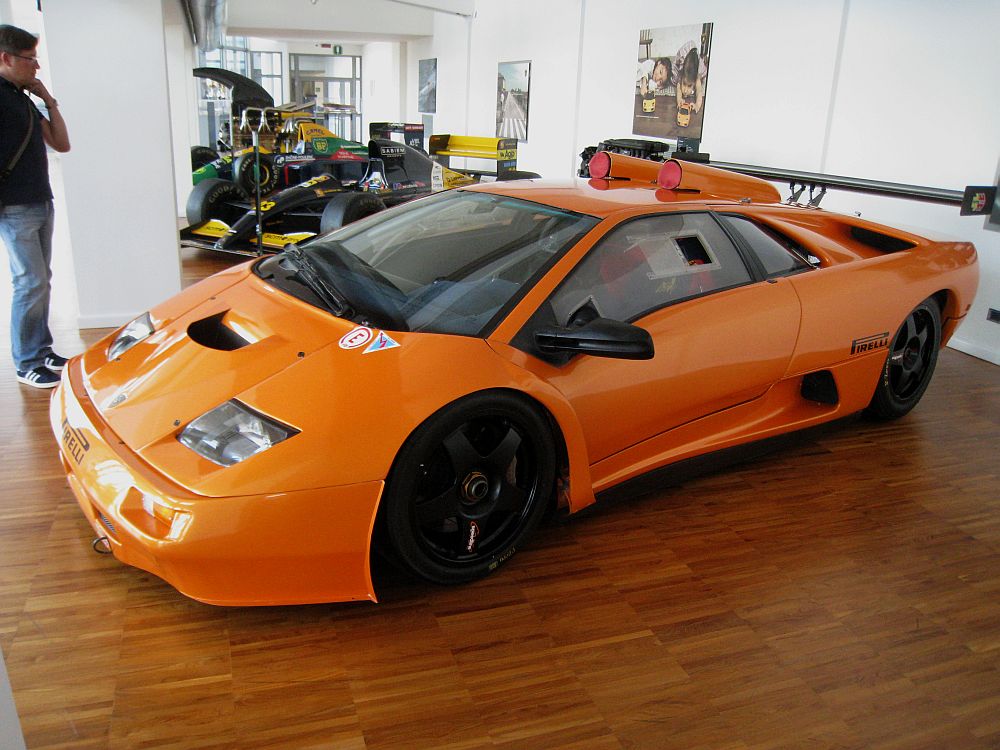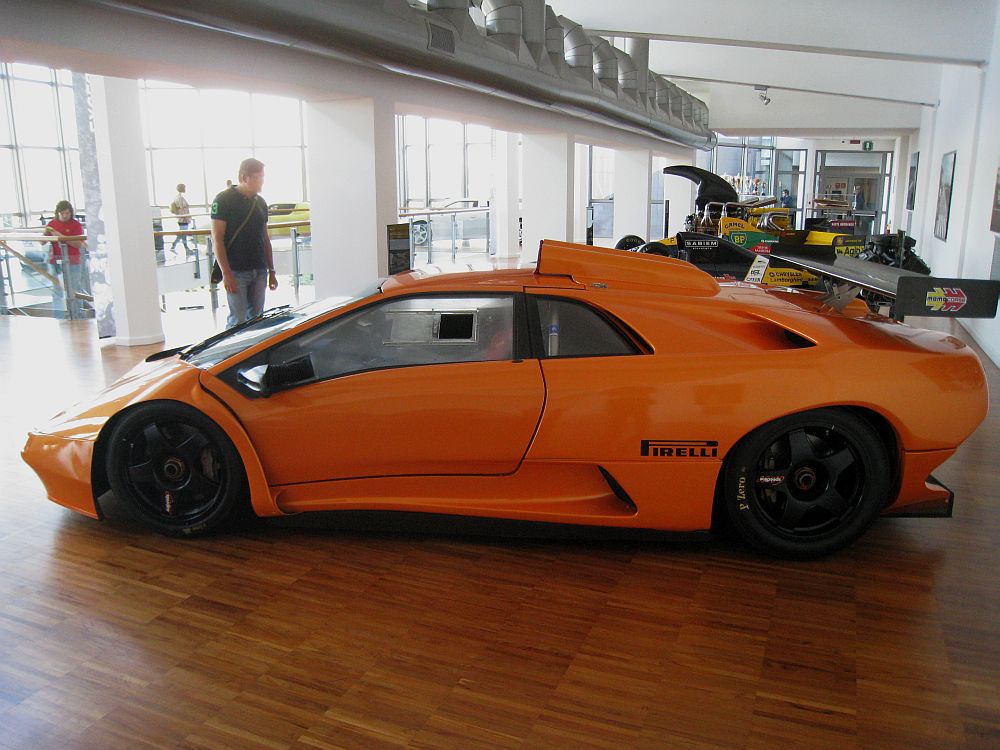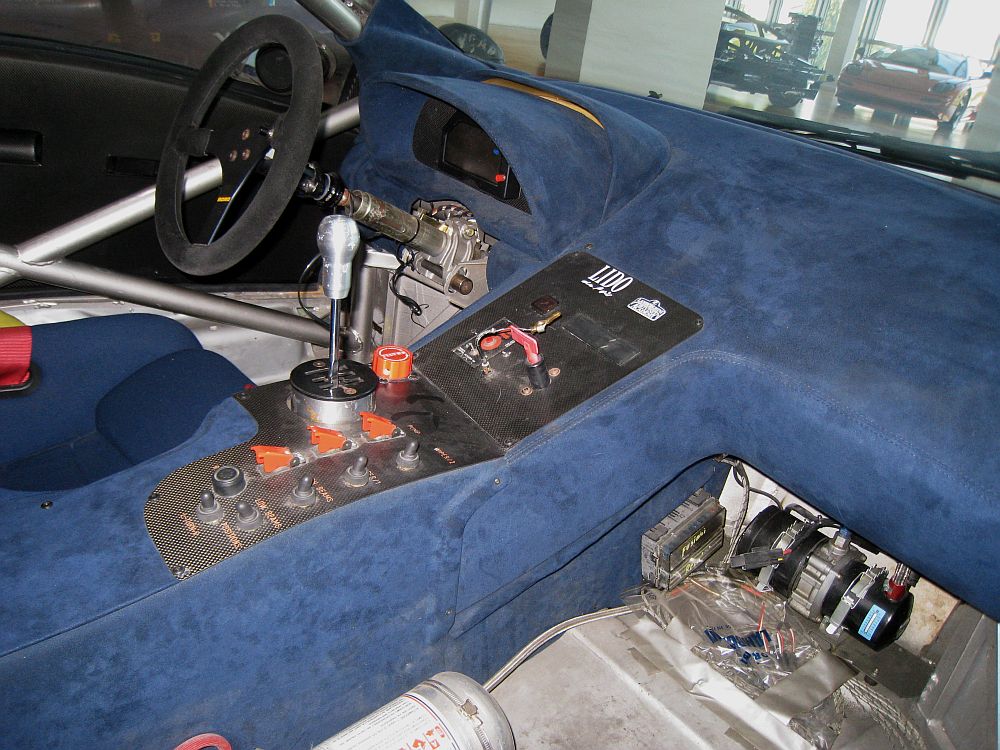Description
The Lamborghini Diablo GT2 was the most extreme and purpose-built racing version of the Diablo ever created—a raw, track-focused machine that pushed the limits of the model’s engineering and marked Lamborghini’s serious re-entry into motorsport. Developed in the late 1990s by Lamborghini Engineering, the Diablo GT2 was designed for endurance racing in the FIA GT2 category, competing against the likes of the Porsche 911 GT2, Ferrari F40 LM, and Dodge Viper GTS-R. Though only a handful were ever built, the Diablo GT2 remains one of the rarest and most formidable expressions of Lamborghini’s V12 legacy, a car born purely for competition rather than the road.
The GT2 program emerged during a pivotal moment in Lamborghini’s history. Under new ownership by Audi’s parent company, Volkswagen Group, Lamborghini sought to demonstrate that it could produce not just outrageous supercars but also serious, competitive race machines. The Diablo GT2 was developed from the already radical Diablo GT, but re-engineered extensively to meet FIA regulations. Every part of the car was optimized for speed, handling, and durability, transforming the Diablo from a road-going supercar into a full-fledged race weapon.
Power came from a highly tuned version of Lamborghini’s 5,992 cc V12 engine, now producing around 590 horsepower at 7,300 rpm and 640 Nm of torque. The engine featured a reworked intake system, racing-grade fuel injectors, and a free-flowing exhaust. Cooling was enhanced through enlarged intakes and additional venting around the engine bay. Power was transmitted to the rear wheels through a close-ratio five-speed sequential manual gearbox, replacing the standard gated transmission to allow faster, more precise gear changes under racing conditions. The clutch and drivetrain were reinforced to handle the rigors of long-distance competition.
The Diablo GT2’s chassis was based on the familiar steel spaceframe but heavily modified with extensive use of carbon fiber and lightweight alloys. The entire body was re-sculpted in carbon fiber, shedding significant weight compared to the production Diablo GT. The result was a car weighing approximately 1,200 kilograms—over 400 kilograms lighter than a standard Diablo. The suspension system used double wishbones with adjustable racing dampers, and the track was widened for better grip and cornering stability. The brakes were racing-spec Brembo ventilated discs with six-piston calipers, providing immense stopping power lap after lap.
Aerodynamics were a defining feature of the Diablo GT2’s design. The car’s body was radically reshaped to maximize downforce and cooling. The front end featured a large splitter and wide air intakes for the brakes and radiator, while the rear gained an enormous adjustable carbon-fiber wing, a vented engine cover, and a deep rear diffuser. The wide body and flared fenders gave it a planted, muscular stance, while the roof-mounted air intake channeled additional cooling air to the engine. Even stationary, the GT2 looked like it was built for speed—a machine whose every surface served a purpose.
Inside, the GT2 was stripped of all comfort and luxury. The interior was bare metal and carbon fiber, equipped with a single lightweight racing seat, a full roll cage, fire suppression system, and digital instrumentation. The steering wheel was detachable for quick driver changes, and the pedals and seat could be adjusted for racing ergonomics. Weight reduction was paramount, so anything non-essential—carpets, insulation, soundproofing, and even basic trim—was removed. The cabin felt closer to that of a Le Mans prototype than a road-going Lamborghini.
On the track, the Diablo GT2 was ferocious. The massive naturally aspirated V12 delivered relentless acceleration, its powerband linear and explosive. The sound was deafening—a mix of mechanical fury and metallic resonance that echoed across circuits. The car’s handling was transformed by its lighter weight, wide track, and aerodynamic grip, giving it far greater stability and precision than any production Diablo. It demanded total concentration from its driver, rewarding smooth, committed inputs with blistering performance. Unlike the all-wheel-drive Diablos, the GT2’s rear-wheel-drive layout made it a true racer’s machine—alive, balanced, and always on the edge.
Despite its potential, the Diablo GT2’s racing career was brief. Only a handful of cars were built, and Lamborghini’s limited factory support meant the GT2 never achieved the sustained success of its European rivals. Nevertheless, it served as an invaluable development platform, proving Lamborghini’s technical capability and influencing future projects, including the Murciélago R-GT of the 2000s. The Diablo GT2’s combination of brutal power, precision engineering, and racing pedigree made it a cult favorite among collectors and enthusiasts, even if its competition record was short-lived.
The Diablo GT2 remains one of the rarest and most significant Diablos ever made—less a variant than a transformation. It was the car that turned Lamborghini’s flamboyant road machines into serious racing contenders. Today, surviving examples are among the most sought-after and valuable of all Lamborghini models, celebrated for their purity of purpose and uncompromising design. The GT2 represented the Diablo at its most extreme: lighter, faster, louder, and more focused than anything before it—a reminder that Lamborghini’s wildest ideas were never just for the showroom, but for the track.





